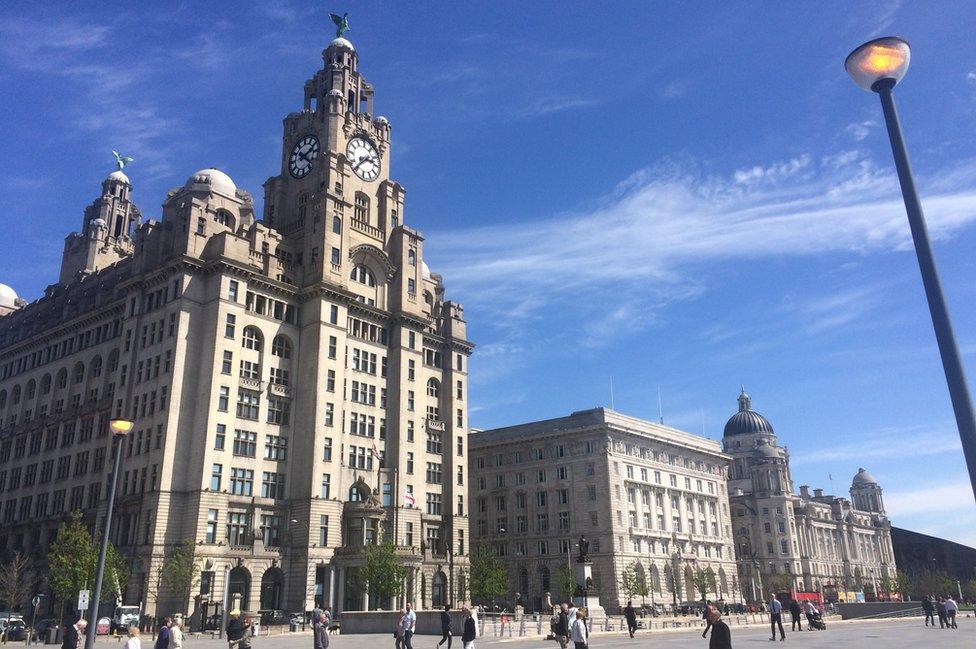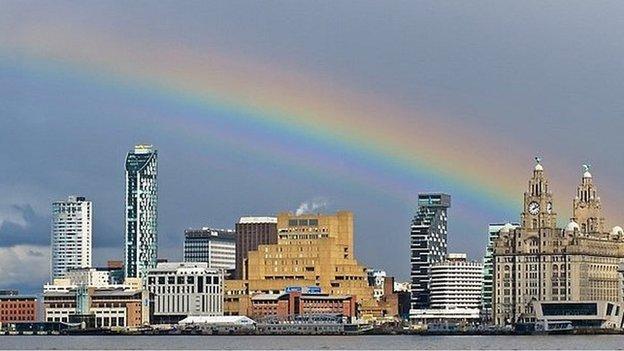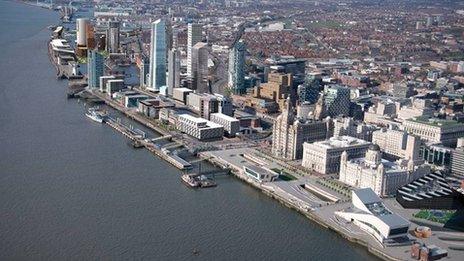Unesco World Heritage: Liverpool retains status but stays on danger list
- Published

Liverpool's waterfront includes the famous trio of buildings known as Three Graces
Liverpool will keep its World Heritage status after Unesco accepted efforts were being made to mitigate the impact of a proposed waterfront development.
Following a meeting in Bahrain, Unesco announced it would not withdraw the grading, but would keep the city on a list of sites in danger.
There were fears it could be lost over the proposed £5bn Liverpool Waters regeneration plan.
Liverpool Mayor Joe Anderson said the decision was "very welcome news".
The city's World Heritage status, external, obtained in 2004 and centred around the city's maritime past, covers six areas, including the Pier Head, Ropeworks and William Brown Street.

Developer Peel said there was "no likelihood" the original Liverpool Waters plan would happen
Unesco officials had expressed "deep concern" about the 30-year Liverpool Waters project, which includes plans to build apartments and a cruise liner terminal on the waterfront and regenerate 150 acres (60 hectares) of dockland.
After the scheme was approved in 2012, the city was added to the World Heritage in Danger, external list.
The scheme's developer Peel said in February there was now "no likelihood" of the project being developed as originally planned after the council proposed a raft of measures aimed at preserving the heritage status.
The measures include the creation of legal guidelines to protect the World Heritage site.
Other suggestions include the creation of a Liverpool World Heritage Trust and the development of a communication strategy aimed at developers.
Mr Anderson said it was a "delicate task" to "balance the needs of a growing city whilst protecting our World Heritage status".
The decision was "a testament to the hard work" that had been going on to "explain the city's vision to Unesco and bring them to the city to see our unique position", he added.
- Published16 February 2018

- Published4 July 2017

- Published20 June 2017

- Published7 March 2012
